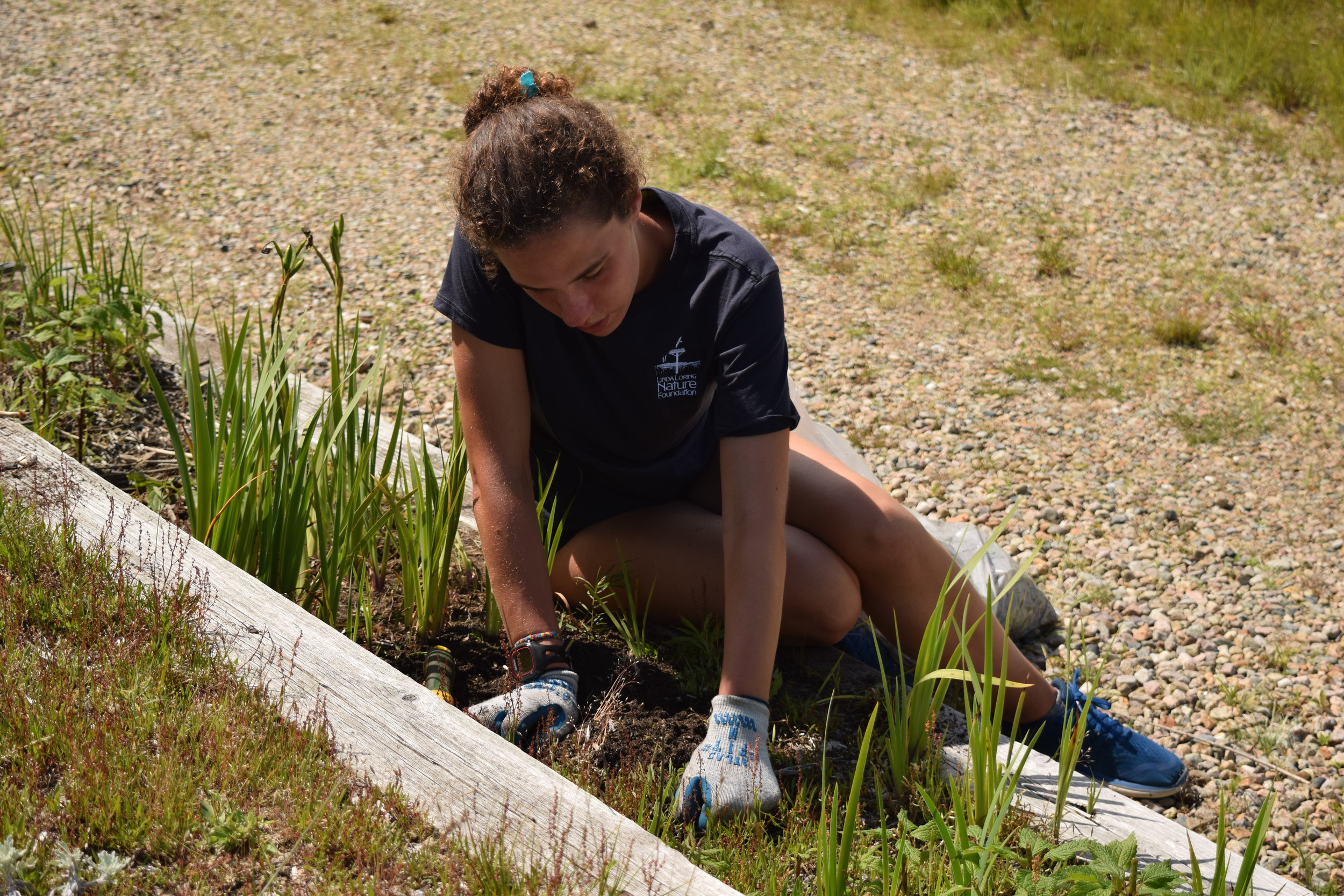What is Stewardship?
Land stewardship can be implemented in many ways. From prescribed fires to targeted invasive species removal, to regular maintenance and upkeep of land, stewardship can have a large impact on protected areas and conservation land. Stewardship efforts are limited by fund and staff availability, and consideration of what will most benefit an ecosystem. As part of this process, we are developing a property management plan to better address both short and long-term needs.
Benefits of Disturbance
Sisyrinchium fuscatum (pictured), is a species of special concern in Massachusetts. This wildflower thrives after periods of disturbance which is why it can be found along the LLNF trails from early to mid-summer. Many plants actually can benefit from disturbances such as fire, floods, storms, and mechanical disturbances. Part of land stewardship involves ensuring enough disturbance to allow these plants to have a competitive chance.
Prescribed Fire
Prescribed fire is not a stewardship tactic employed at LLNF, however it is used elsewhere on Nantucket during the off-season. Fire is a part of natural processes in most ecosystems and can actually benefit many plants and animals. Prescribed fires are a way of stimulating seed germination and revealing soil mineral layers without major risk of damage to human life or property.
Native Seed Collection
Native seed collection is used to promote native plant growth around the island. Seeds are collected from common native wildflower, grass, and shrub species, and then cultivated in a greenhouse. They are planted along eroded trails and road edges, and in areas where invasive plants have been removed. This is an important way to maintain local plant genetic diversity.
Invasive Removal
An invasive plant species moves into an area where it is not naturally found and causes detrimental effects to the native species. This can be in the form of outcompeting other species for space or sunlight, or in some cases, releasing toxins into the ground that limit the growth of other plants. We constantly battle these invasive plants to prevent them from taking hold in our rare ecosystem. Some invasives include Japanese Black Pine, Honeysuckle, and Spotted Knapweed.
Soil Disturbance
Sandplain grassland is a globally rare habitat with a significant concentration found on Nantucket. It consists of early successional species that thrive, and often require some form of disturbance. Disturbance on Nantucket can include strong winds, salt spray, fire, mowing, or a combination of these factors. Without disturbance, the sandplain grassland species are often outcompeted by shrubs and trees.





